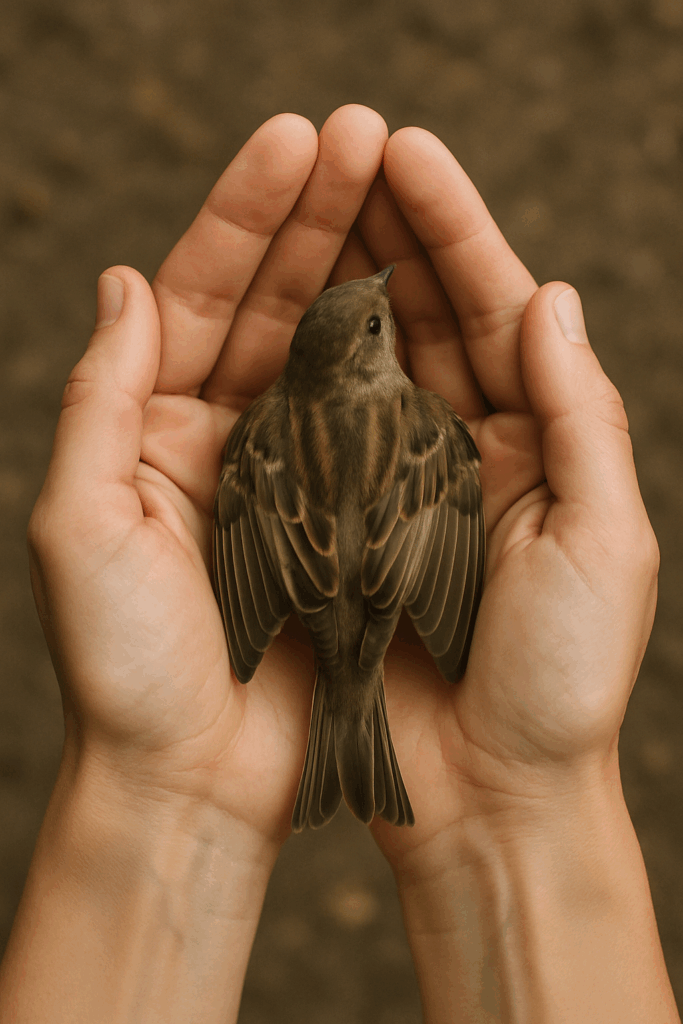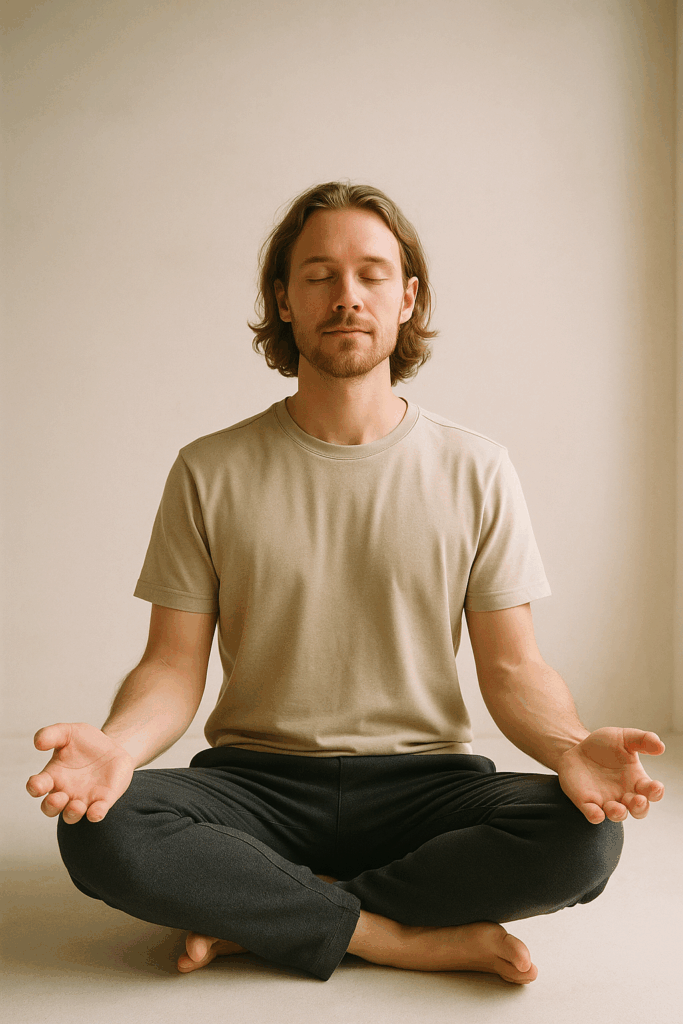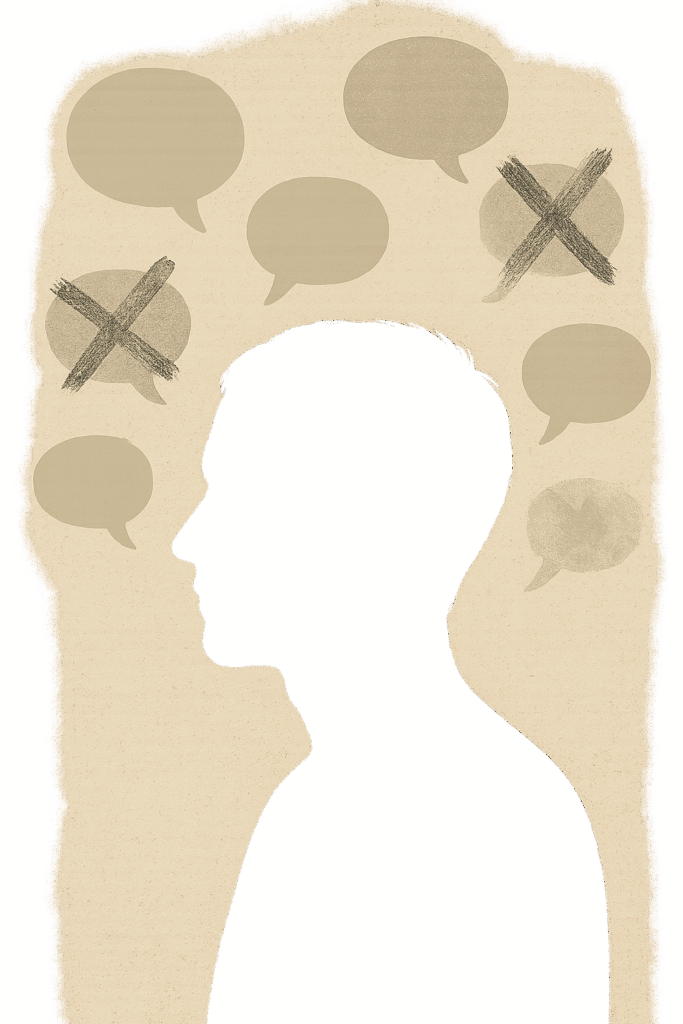
We spend most of our lives trying to control things that are completely out of our hands. We grip our expectations, our relationships, our plans, and our identities so tightly that our knuckles turn white. The harder we squeeze, the more stressed we become.
Here’s what’s strange: the very act of trying to control everything often makes us feel more out of control. When we can’t make our boss appreciate us, when our kids don’t listen, when our bodies age, or when our carefully laid plans fall apart, we suffer. Not just from the situation itself, but from fighting against reality.
Mindfulness practice teaches us something different. It shows us how to relax our grip without giving up or becoming passive. This isn’t about becoming indifferent to life or pretending things don’t matter. It’s about learning to respond rather than react, to stay present when things get difficult, and to find peace even when circumstances aren’t what we want them to be.
The lessons in this practice don’t come from reading about letting go in books or thinking about it philosophically. They come from sitting quietly, watching your mind work, and noticing what happens when you stop fighting your experience. They come from real moments when you catch yourself holding your breath during a stressful conversation and remember to exhale. They come from recognizing that the story you’re telling yourself about a situation might not be the whole truth.
These five lessons aren’t theories. They’re discoveries that happen naturally when you start paying attention to how your mind creates suffering and how it can also create freedom.Retry
Lesson 1: Non-Attachment vs. Detachment

Most people think letting go means shutting down emotionally or pretending they don’t care. This creates a big problem because when we try to stop feeling, we often end up feeling worse. We become numb, disconnected, and sometimes even depressed.
Non-attachment is completely different. When you’re non-attached, you still care deeply. You still feel emotions fully. You still want good things to happen. The difference is that you don’t need things to be a certain way for you to be okay.
Think about holding a bird in your hands. If you squeeze too tight, you’ll hurt it. If you open your hands completely, it flies away. Non-attachment is holding your hands just open enough that the bird can stay if it wants to, but it’s also free to leave. You’re present with whatever happens.
In mindfulness practice, you learn this by watching your thoughts and feelings without immediately jumping in to fix, change, or judge them. You might notice anger rising in your chest during meditation. Instead of pushing it away or feeding it with more angry thoughts, you just observe it. You feel the heat, the tension, the way it moves through your body. You stay present with it without making it bigger or smaller than it is.
This teaches you something important: you can experience difficult emotions without being controlled by them. You can want something without being desperate for it. You can love someone without needing them to behave a certain way.
The practice shows you that detachment makes you less human, while non-attachment makes you more human. When you’re detached, you’re protecting yourself from life. When you’re non-attached, you’re fully engaging with life while staying centered in yourself.
This difference changes everything about how you handle relationships, work stress, and daily disappointments.Retry
Lesson 2: Impermanence as Liberation

Everything changes. You know this intellectually, but mindfulness practice makes you feel it in your bones. When you sit quietly and pay attention, you start to notice that nothing stays the same, not even for a few seconds.
Your breath changes. Your thoughts come and go. Physical sensations appear and disappear. Emotions rise and fall. Even the sounds around you shift constantly. This isn’t just something you observe once and understand forever. You have to keep seeing it happen, over and over, until it becomes real to you.
At first, this can feel unsettling. We want some things to stay the same. We want our good moods to last. We want our loved ones to stay healthy. We want our successes to stick around. But fighting against change is what creates most of our stress.
Here’s what happens when you really accept that everything is temporary: difficult experiences become easier to handle. When you’re going through a hard time, you remember at a gut level that this won’t last forever. The anxiety you’re feeling right now will change. The sadness will shift. The physical pain will move.
This doesn’t mean you become passive or stop trying to improve your situation. It means you stop adding extra suffering on top of your regular human challenges. Instead of thinking “This is terrible and it’s never going to end,” you start thinking “This is difficult right now, and it will change.”
The same awareness helps with good experiences too. When something wonderful happens, you can enjoy it fully without desperately trying to make it permanent. You can appreciate the moment without the background anxiety of knowing it won’t last forever.
Mindfulness practice teaches you that impermanence isn’t the enemy of happiness. It’s actually what makes happiness possible. If nothing ever changed, you’d be stuck with whatever you have right now, forever.Retry
Lesson 3: The Stories We Tell Ourselves

Your boss sends you a short email that says “We need to talk.” Immediately, your mind creates a story: “I’m getting fired. I must have messed up that project. They probably think I’m incompetent. I’ll never find another job.” Within seconds, you’re stressed about something that hasn’t happened and might not even be true.
Mindfulness practice helps you catch this process in action. You start to see the difference between what actually happened (your boss sent a brief email) and the story your mind created about what it means.
We do this constantly. Someone doesn’t text us back quickly, and we decide they’re angry with us. We feel tired one morning, and we assume we’re getting sick. A friend seems quiet, and we think we did something wrong. Our minds are story-making machines, and most of the time we don’t even realize it’s happening.
The stories aren’t always negative. Sometimes we create positive fantasies that set us up for disappointment. We meet someone new and imagine our whole future together. We get one good performance review and start planning our promotion. We have one good day and assume our problems are solved.
When you practice mindfulness, you learn to pause between the event and the story. You notice the moment when your mind starts spinning a narrative. You can ask yourself: “What actually happened here? What am I adding to this situation?”
This doesn’t mean you ignore your intuition or stop making reasonable plans. It means you recognize when you’re treating your interpretations as facts. You realize that your anxious thoughts about the future aren’t the same as the actual future. Your assumptions about what other people think aren’t the same as what they actually think.
This awareness gives you tremendous freedom. Instead of living inside your mental stories, you can live in reality. Reality is usually much more manageable than the stories we tell ourselves about it.Retry
Lesson 4: Resistance Creates Persistence

When you tell yourself not to think about a white elephant, what happens? You think about a white elephant. When you try to force yourself to fall asleep, you stay awake. When you fight against feeling anxious, the anxiety gets stronger. This is how resistance works in your mind and body.
Mindfulness practice shows you this pattern clearly. You sit down to meditate, and your mind starts racing. Your first instinct is to push the thoughts away, to try harder to focus, to get frustrated with yourself. But the more you fight your wandering mind, the more agitated you become.
Then you learn to do something counterintuitive. Instead of fighting the thoughts, you acknowledge them. Instead of tensing up against physical discomfort, you soften around it. Instead of judging yourself for feeling anxious, you let the anxiety be there without making it wrong.
This isn’t giving up or being passive. It’s recognizing that resistance often makes problems bigger and last longer. When you stop fighting your experience, something interesting happens. The thing you were resisting often changes on its own.
You can see this with physical pain. When you tense up against a headache, the tension makes it worse. When you relax and breathe into the sensation, it often shifts or becomes more tolerable. The same thing happens with emotions. When you fight against sadness, you add frustration and self-judgment to the sadness. When you let sadness be present without resistance, it can move through you naturally.
This principle applies to situations too. When you resist a difficult conversation, you create more stress around it. When you accept that the conversation needs to happen, you can approach it more calmly. When you fight against your current job situation, you drain energy that could be used to improve it or find something better.
Acceptance doesn’t mean you have to like what’s happening or that you can’t work to change it. It means you stop wasting energy fighting reality and start working with what actually is.Retry
Lesson 5: Letting Go as a Practice, Not a Destination

People often think of letting go as something you do once, and then you’re done. You let go of your ex-partner, your old job, your childhood trauma, and that’s it. Problem solved. But mindfulness shows you that letting go is more like brushing your teeth or exercising. It’s something you do regularly, not something you complete.
Your mind will grab onto new worries, old resentments, future plans, and past mistakes. This is normal. This is what minds do. The goal isn’t to reach a state where you never get attached to anything again. The goal is to notice when you’re gripping tightly and learn to relax your hold.
Some days you’ll catch yourself quickly. You’ll notice you’re obsessing over something and be able to redirect your attention without much effort. Other days you’ll be completely caught up in your thoughts and feelings before you even realize what happened. Both experiences are part of the practice.
This is why mindfulness meditation is called practice. You’re building the mental muscle that helps you recognize when you’re holding on too tightly. You’re training yourself to notice the difference between caring about something and being consumed by it.
The more you practice, the faster you notice when you’re stuck. You might spend three hours worrying about a conversation instead of three days. You might catch yourself replaying an argument after ten minutes instead of carrying it around for weeks. You develop what some people call “recovery time” – how quickly you can return to the present moment after getting caught up in mental drama.
This requires patience with yourself. When you notice you’ve been gripping something tightly, your first reaction might be frustration. “I should know better by now. Why am I still doing this?” But getting frustrated with yourself for being human just creates another thing to let go of.
The practice is gentle. It’s noticing without judgment. It’s returning to the present moment again and again, as many times as necessary. Some days you’ll need to let go of the same worry fifty times. That’s not failure. That’s practice.Retry
Final Words
Learning to let go isn’t something that happens in a meditation retreat or therapy session and then stays with you forever. It happens in small moments throughout your regular life. When you’re stuck in traffic and notice your shoulders tensing up, you can breathe and soften. When your teenager rolls their eyes at you, you can pause before reacting. When your mind starts spinning worst-case scenarios about a work situation, you can recognize the story-telling and come back to what’s actually happening right now.
You don’t need to sit in meditation for hours to apply these lessons. You can practice non-attachment while washing dishes by staying present with the task instead of mentally planning your weekend. You can work with impermanence by really noticing how your mood shifts throughout the day. You can catch your mind creating stories during conversations by listening more carefully to what people actually say instead of what you think they mean.
The key is starting small. Pick one situation where you typically get stressed and try applying one of these ideas. Maybe it’s your commute, your morning routine, or checking your email. Notice when you’re fighting reality and see what happens when you stop fighting. Notice when you’re creating stories and come back to the facts.
This work takes time because you’re changing deeply ingrained mental habits. You’re learning to respond differently to being human. Some days will feel easier than others. Some situations will trigger all your old patterns, and that’s normal. The practice isn’t about becoming perfect at letting go. It’s about becoming more aware of when you’re holding on and having more choices about what to do next.
What you’ll find is that letting go doesn’t make you care less about your life. It helps you care more effectively. When you’re not wasting energy fighting things you can’t control, you have more energy for the things you can actually influence. When you’re not lost in mental stories, you can see situations more clearly and make better decisions.
This is how mindfulness practice changes your relationship with difficulty. Instead of something that happens to you, challenge becomes something you can work with skillfully.
You may also be interested in:
1. Letting Go Meditation Script
2. 5 Letting Go Exercises That You Should Practice Everyday
3. The Art of Letting Go

